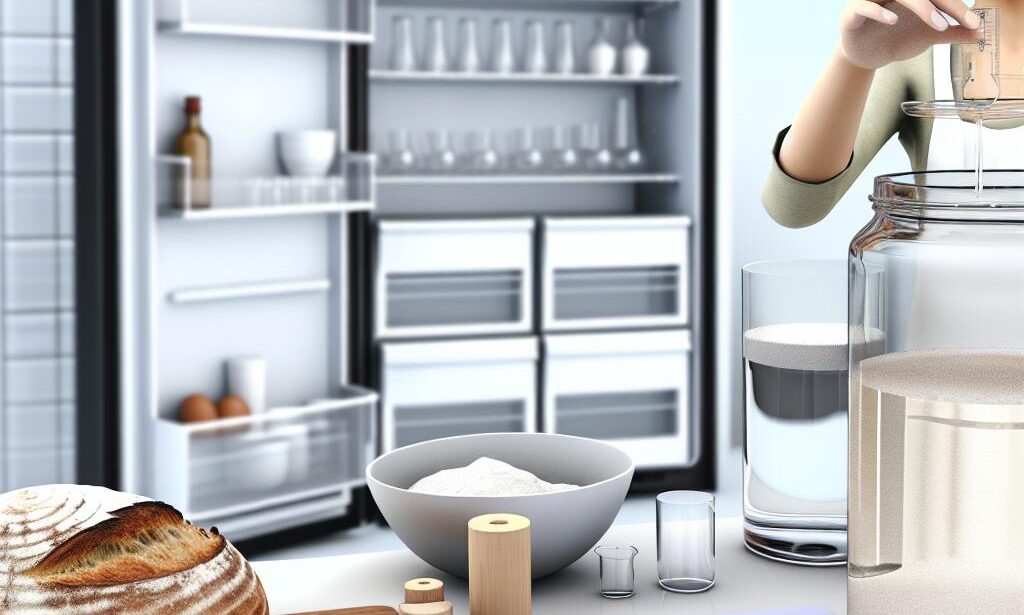Sourdough bread has been a staple in many cultures for centuries, known for its unique tangy flavor and chewy texture. One of the key components of making sourdough bread is the sourdough starter, a mixture of flour and water that ferments naturally to create the leavening agent for the bread. In this article, we will explore the art of mastering sourdough starter, offering tips for creating and storing this essential ingredient for delicious homemade bread. Whether you are a seasoned baker or a novice in the kitchen, these tips will help you achieve the perfect sourdough starter every time.
Table of Contents
- Understanding the Basics of Sourdough Starter
- Choosing the Right Flour and Water for Your Starter
- Maintaining and Feeding Your Sourdough Starter
- Tips for Storing Your Sourdough Starter
- Troubleshooting Common Issues with Sourdough Starter
- Q&A
- Final Thoughts
Understanding the Basics of Sourdough Starter
When it comes to mastering sourdough starter, it’s essential to understand the basics of creating and storing this key ingredient. Sourdough starter is a mixture of flour and water that has been fermented by wild yeast and lactobacilli bacteria. This fermentation process gives sourdough its unique flavor and helps to leaven bread without the need for commercial yeast.
Creating a sourdough starter is a simple process that requires just two ingredients: flour and water. To create your starter, mix equal parts flour and water in a clean container and let it sit at room temperature for several days, feeding it regularly to encourage fermentation. Once your starter is active and bubbly, you can use it to bake delicious sourdough bread.
Storing your sourdough starter is crucial to maintaining its health and vitality. Keep your starter in a clean, airtight container in the refrigerator when not in use. Remember to feed your starter regularly to keep it active and ready for baking. With proper care and attention, you can enjoy the benefits of sourdough starter for years to come.

Choosing the Right Flour and Water for Your Starter
When it comes to creating a successful sourdough starter, choosing the right flour and water is crucial. The type of flour you use will impact the flavor, texture, and overall quality of your starter. Whole wheat flour, rye flour, and all-purpose flour are popular choices for creating a starter. Each type of flour will result in a slightly different flavor profile, so it’s important to experiment and find what works best for your taste preferences.
When it comes to water, using filtered or bottled water is recommended to avoid any unwanted chemicals or additives that may be present in tap water. The temperature of the water is also important, as it can affect the fermentation process. Ideally, you want to use water that is around room temperature, between 70-80°F. This will help create an optimal environment for the wild yeast and bacteria to thrive and create a healthy starter.

Maintaining and Feeding Your Sourdough Starter
Once you have successfully created your sourdough starter, it is important to maintain and feed it regularly to keep it healthy and active. Here are some tips to help you master the art of :
- Keep it at room temperature: Store your sourdough starter at room temperature to keep it active. Avoid storing it in the fridge for long periods of time, as this can slow down the fermentation process.
- Feed it regularly: To keep your sourdough starter healthy, you should feed it with equal parts flour and water on a regular schedule. This will help maintain the balance of yeast and bacteria in the starter.
- Use a kitchen scale: For accuracy, use a kitchen scale to measure out the flour and water when feeding your sourdough starter. This will help ensure that you are maintaining the proper hydration level.
| Feeding Schedule | Flour | Water |
|---|---|---|
| Morning | 50g | 50g |
| Evening | 50g | 50g |
By following these tips and maintaining a regular feeding schedule, you will be able to keep your sourdough starter healthy and active, ready to use in all your favorite sourdough recipes.

Tips for Storing Your Sourdough Starter
When it comes to creating and storing your sourdough starter, there are a few key tips to keep in mind to ensure that it stays healthy and active. Proper storage is essential for maintaining the quality of your starter and producing delicious sourdough bread. Here are some tips to help you master the art of storing your sourdough starter:
- Use a glass jar: Glass jars are the best option for storing your sourdough starter as they are non-reactive and easy to clean. Make sure to use a jar with a loose-fitting lid to allow for airflow.
- Keep it in the fridge: Storing your sourdough starter in the fridge is the best way to slow down fermentation and keep it healthy. Make sure to feed your starter regularly, at least once a week, to keep it active.
- Label and date your jar: To keep track of when you last fed your starter, make sure to label your jar with the date. This will help you maintain a feeding schedule and ensure that your starter stays healthy.

Troubleshooting Common Issues with Sourdough Starter
When it comes to troubleshooting common issues with your sourdough starter, there are a few key tips to keep in mind. One common issue that many bakers face is a lack of activity in their starter. If your starter is not rising or bubbling, it may be due to a few factors such as temperature, feeding schedule, or the type of flour used. To remedy this, try adjusting the temperature of your starter environment, feeding it more regularly, or experimenting with different types of flour.
Another common issue with sourdough starters is a strong sour smell or off-putting odor. This can be caused by a variety of factors including over-fermentation, using tap water with chlorine, or contamination from other ingredients. To address this issue, try feeding your starter more frequently to prevent over-fermentation, use filtered water, and ensure that all utensils and containers are clean and free from any contaminants.
Q&A
Q: What is a sourdough starter and why is it important in baking?
A: A sourdough starter is a mixture of flour and water that has been fermented by wild yeast and bacteria. It is important in baking because it provides leavening for bread, giving it a unique flavor and texture.
Q: How do you create a sourdough starter?
A: To create a sourdough starter, mix equal parts flour and water in a jar and let it sit at room temperature, feeding it regularly with more flour and water until it becomes bubbly and active.
Q: How do you know when your sourdough starter is ready to use?
A: Your sourdough starter is ready to use when it is bubbly, has a pleasant sour smell, and doubles in size within a few hours of feeding.
Q: How should you store your sourdough starter?
A: You can store your sourdough starter in the refrigerator, feeding it regularly to keep it active. You can also freeze a portion of your starter as a backup.
Q: What are some tips for maintaining a healthy sourdough starter?
A: Some tips for maintaining a healthy sourdough starter include feeding it regularly, using it in recipes often, and keeping it at a consistent temperature. It’s also important to use filtered water and high-quality flour.
Final Thoughts
In conclusion, mastering sourdough starter is a rewarding and delicious journey that requires patience and practice. By following the tips outlined in this article, you can create a healthy and vibrant sourdough starter that will elevate your bread baking to new heights. Remember to feed and maintain your starter regularly, experiment with different flours and hydration levels, and store it properly to ensure its longevity. With dedication and a little bit of trial and error, you’ll soon be enjoying the tangy, complex flavors of homemade sourdough bread. Happy baking!

